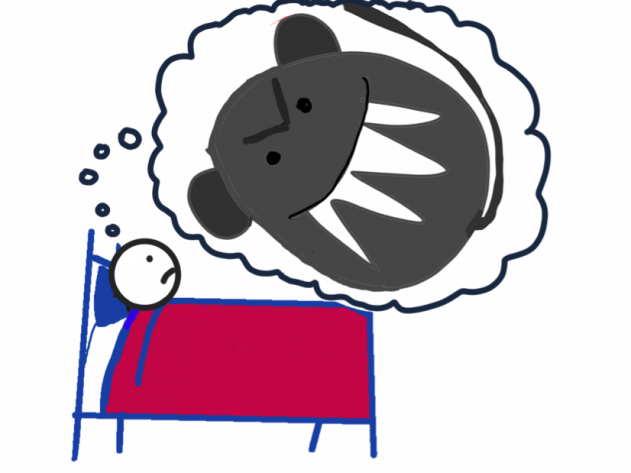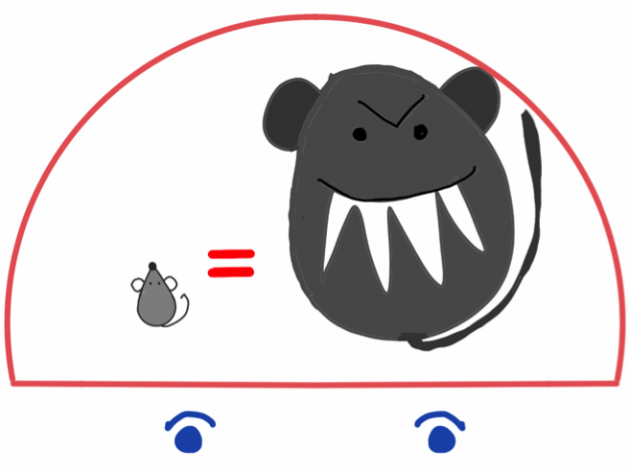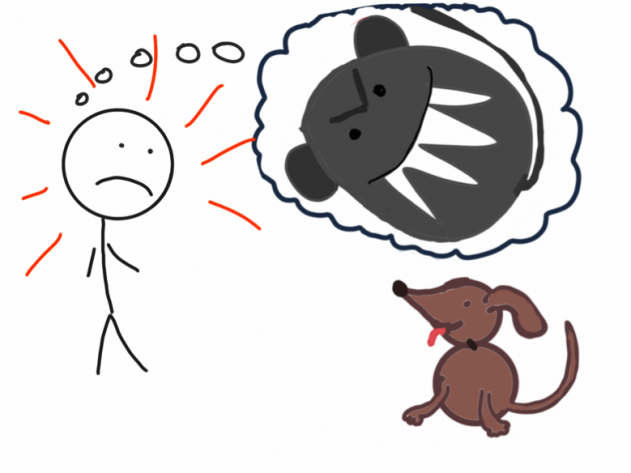PSYCHOLOGY OF US
YOUR RESOURCE LIBRARY
The Science Behind Post-Traumatic Stress
Neuroscientist Antonio Damasio studied emotions for over 30 years. His research suggested that emotions are motivators that have evolved over millions of years.
All emotions, positive and negative, have basic evolutionary functions that are geared toward our survival. Similar to how hunger prompts us to eat, each emotion propels us towards fulfilling certain basic needs: safety, rest, bonding, and resources.

Safety first
Our brains have a highly-evolved survival system. When we perceive danger, our fear response releases bursts of the stress hormones such as cortisol and adrenaline that prepare our bodies to fight, freeze, or run.

The amygdala hijack
At the centre of our survival system is the amygdala. It is the threat detection centre that triggers our fear responses. When an event becomes so threatening that it overwhelms our ability to cope, our amygdala shifts to ultimate survival mode. It blocks our thinking-brain (prefrontal cortex) functions in order to react swiftly. Stress hormones flood our system and impair our ability to make rational judgments. For example, we may jump at the sight of a mouse even when we know it won’t harm us. In traumatic situations, often we shut down, freeze up, or dissociate.

Memory storage
We may think that our memory is like a USB stick, a place where our brain can go to recall information. But actually memory is made up of many complex systems in different parts of the brain. The explicit memory system is the memory bank for facts and life stories. It also holds language, context, and reason. The implicit memory system is the emotional-memory bank that holds images, sensations, and emotions (in other words, fear associations or triggers). Implicit memories are stored in the limbic system (the emotional brain).
Our explicit memory system is in our cerebral cortex (the thinking brain). Responsible for logic, it gives meaning to our emotional memories. So our brain goes to the implicit memory system to find our feelings about an event (Scary!..) and the explicit memory system to find descriptions of that event (..because I hate mice).

Memory interference
In normal situations, our brain stores an event in both implicit and explicit memory systems (in the thinking brain and emotional brain). But since the amygdala hijacks the thinking brain when we experience intense fear, our thinking brain’s ability to store the traumatic event’s details is thwarted too. As a result, the traumatic event is encoded only in implicit memory (the emotional brain).

Triggers
This means that our feelings and sensations of the traumatic event are stored but not the language or context. So anything that reminds us of the trauma (such as other furry creatures) can automatically trigger the emotions associated with the traumatic experience without the sense-making input of the thinking brain. As a result, we may feel anxious in new situations and but not know why.
Developing hyper-alertness.
After a traumatic event, our brains may become hyper-sensitized to anything that resembles the frightening experience. Our bodies react as if the trauma is happening again, even if when are not consciously aware of it. So, we often feel scared or anxious in normal situations and don’t know why.
Caught in a trauma loop.
If traumatic memories are not addressed, our brains can remain on hyper-alert. We may develop a tendency to interpret our anxious feelings and body sensations as evidence that there is potential danger. Because anxiety is highly unpleasant, we may avoid similar situations and miss opportunities to overcome our fears. The more that we avoid anxiety-provoking situations, the more entrenched our fears become. Consequently, a trauma loop occurs and becomes increasingly difficult to break.
The good news is that post-traumatic stress is treatable.
Amazing new studies using live brain scans (fMRIs) show that our brains have a surprising amount of plasticity, which means that we can reshape our brains to respond differently to stimuli no matter how old we are.
FIND OUT MORE: Trauma, How Monkey Therapy Helps You Overcome Past Trauma.
References and Contributors
Anthony Damasio. (2005). Descartes’ Error: Emotion, Reason, and the Human Brain.
Paul Gilbert. (2010). The Compassionate Mind.
Bessel van der Kolk. (2014). The Body Keeps the Score: Brain, Mind, and Body in the Healing of Trauma.
Catherine Pittman & Elizabeth Karle. (2015). Rewire Your Anxious Brain: How to Use the Neuroscience of Fear to End Anxiety, Panic, and Worry.
Alan Baddely. (2016). Memory and Learning. The Brain From Top to Bottom. http://thebrain.mcgill.ca/flash/a/a_07/a_07_p/a_07_p_tra/a_07_p_tra.html
Ruth Buczynski & Peter Levine. (2016). Why It’s Critical to Understand the Role of Memory In Trauma Therapy.
Anthony Damasio. (2005). Descartes’ Error: Emotion, Reason, and the Human Brain.
Helpguide.org. (2016). Traumatic Stress. Recovering from the Stress of Experiencing or Being Exposed to Traumatic Events. http://www.helpguide.org/articles/ptsd-trauma/traumatic-stress.htm
DE Linden. (2006). How Psychotherapy Changes the Brain: The Contribution of Functional Neuroimaging. Molecular Psychiatry.
Joseph Ledoux. (2007). Emotional Memory. Scholarpedia.
Dan Siegel. (2010). Mindsight: The New Science of Personal Transformation.
Dan Siegel. (2010). The Mindful Therapist: A Clinician’s Guide to Mindsight and Neural Integration
Ann Wetmore & Claudia Herbert. (2008). Overcoming Traumatic Stress: A Self-Help Guide Using Cognitive Behavioral Techniques: A Self-help Guide Using Cognitive Behavioural Techniques.
How therapy works
Worksheets and useful information
Creative Process
Feeling Stuck
Stress
Depression
Feeling Down
Anxiety
Guilt and shame
Find out more
What I do differently
Monkey Therapy
Transformational Coaching
Online Therapy
Trauma
Your inner critic
The science behind it
Steps you can take now
Publications
More than CBT
More than IFS
Psychedelics
Neurodiversity
Thank you!
Your message has been sent. We'll contact you shortly
© 2023 The Monkey Therapist. All Rights Reserved. Site Designed By Samantha Ósk
PRIVACY POLICY